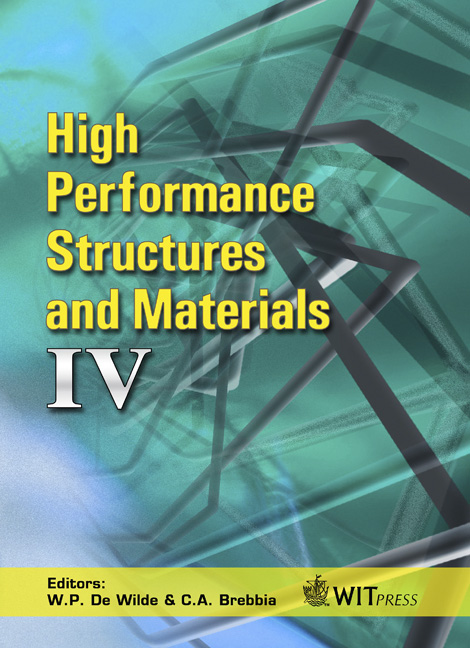Eco-efficient Manufacturing Process For Fibre Reinforced Thermoplastic
Price
Free (open access)
Transaction
Volume
97
Pages
8
Page Range
203 - 210
Published
2008
Size
1,088 kb
Paper DOI
10.2495/HPSM080221
Copyright
WIT Press
Author(s)
K. Tanaka, T. Katayama & K. Uno
Abstract
Carbon fibre reinforced plastics (CFRP) have been applied mainly for aerospace applications. For automotive applications, they are not really used due to the high cost. The use of composites in automotive applications requires specific focus on manufacturing and cost constraints. In this study, the carbon fibre reinforced thermoplastics (CFRTP) process using high-speed processing by the electromagnetic induction (IH system) in combination with non-woven stitched multi-axial cloth (NSMC) was proposed. The IH system allows heating of the tooling surface instantaneously. Therefore, this system also can reduce production cycle times and the cost of manufacturing composite applications. Using the IH system, only about 60 seconds is needed to raise the mould temperature from 25°C to 250°C, and the production cycle time can be drastically reduced. Keywords: carbon fibres, thermoplastic resin, non-woven fabric, stitching, nonwoven stitched multi-axial cloth (NSMC), electromagnetic induction, bending strength. 1 Introduction It is necessary to reduce weight in automobiles in order to obtain better gasoline mileage. The use of carbon fibre reinforced plastic (CFRP), which is one of the solutions in reducing the weight of automotive applications, requires specific focus on manufacturing and cost (Carney [1]). The traditional method of producing composite parts where the fibre lay-up is controlled is to lay up pre-impregnated unidirectional fibre tapes on the mould tool in the desired stacking sequence. After this lay-up process, the parts will be
Keywords
carbon fibres, thermoplastic resin, non-woven fabric, stitching, nonwoven stitched multi-axial cloth (NSMC), electromagnetic induction, bending strength.





